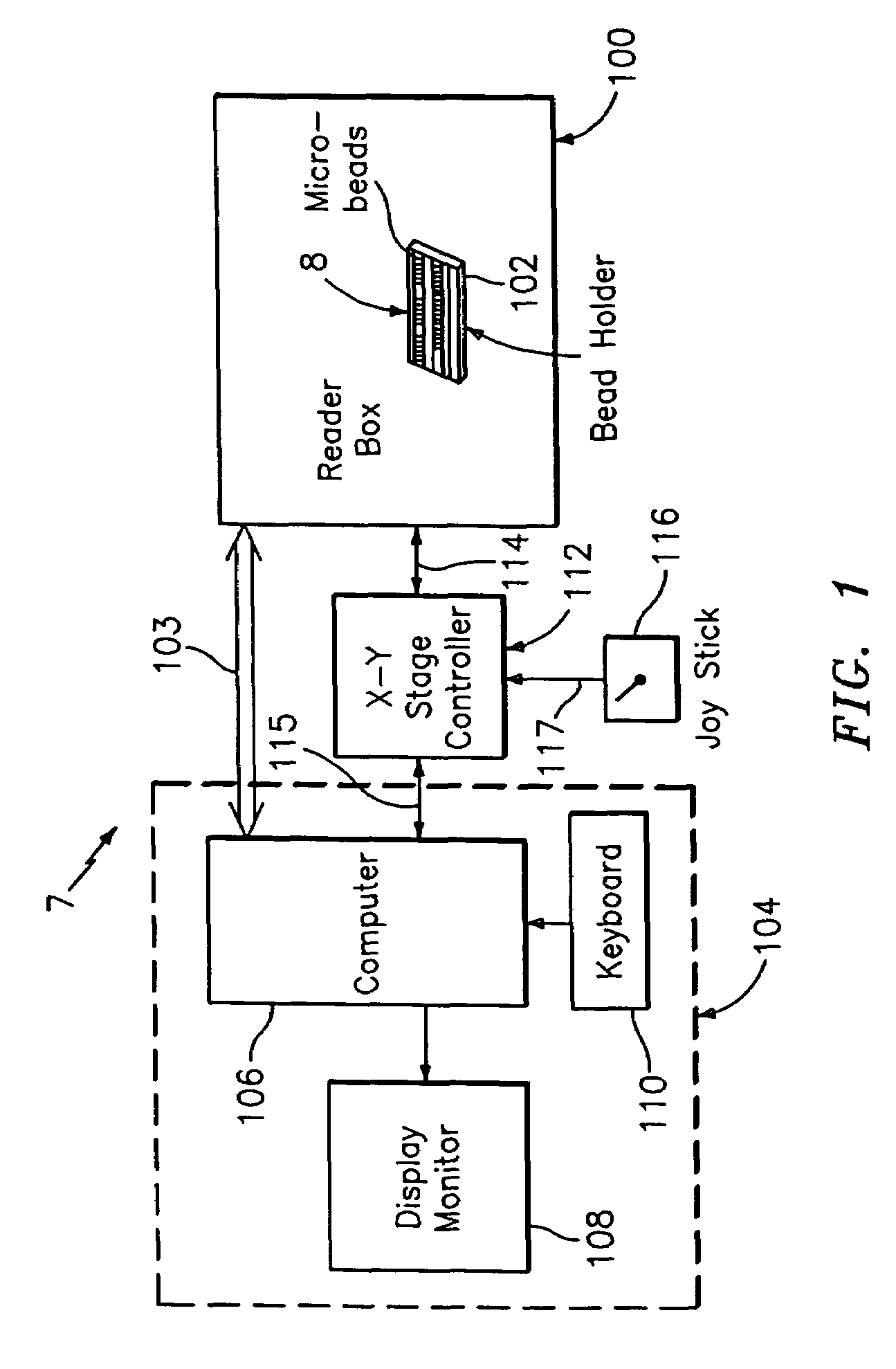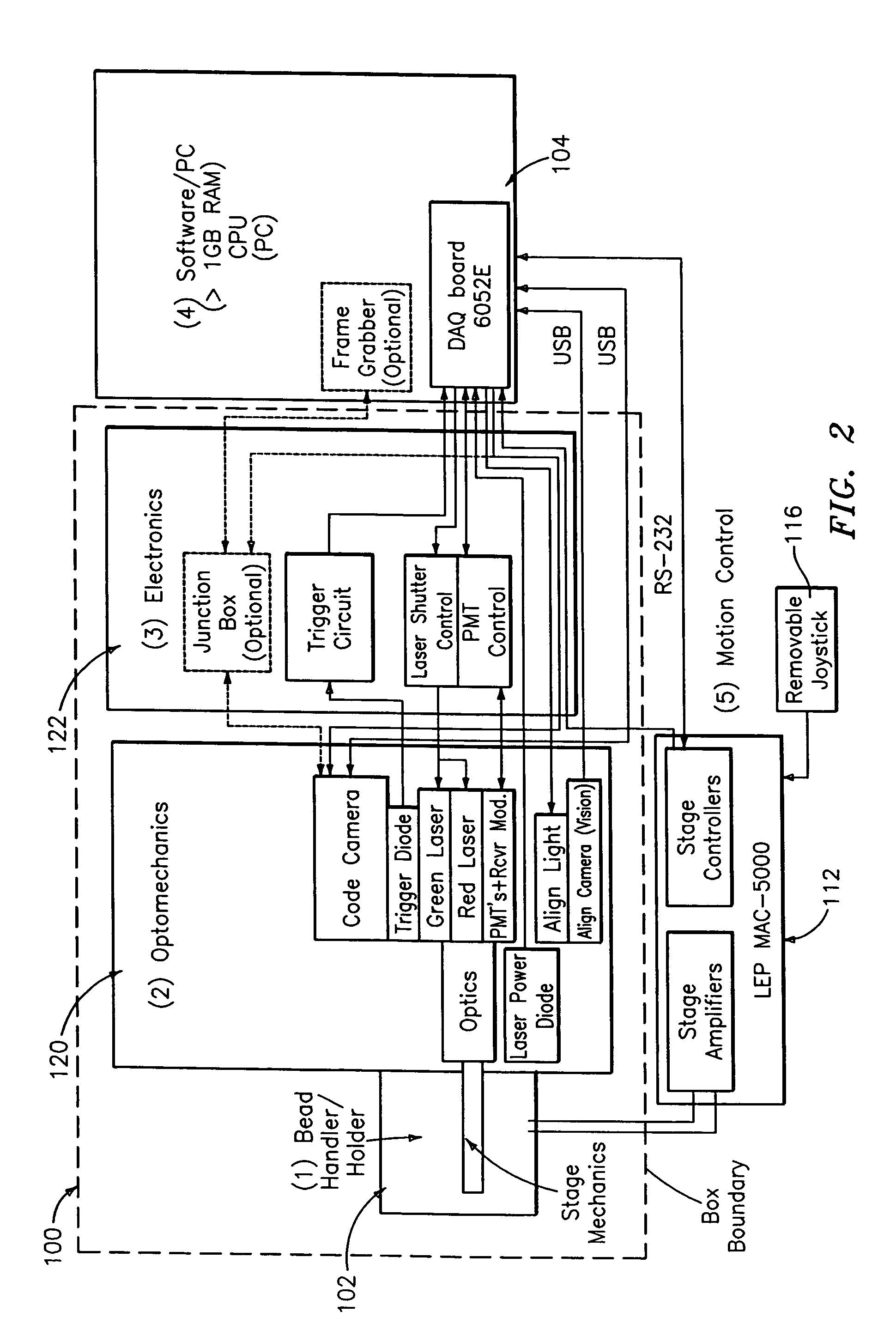Optical reader for diffraction grating-based encoded optical identification elements
an optical identification element and optical reader technology, applied in the field of optical readers for diffraction grating-based encoded optical identification elements, can solve the problems of large size of beads/substrates used for uniquely identifying the probes, insufficient existing technologies, and insufficient radio-frequency identification (rfid), etc., and achieve the effect of reducing the size of existing technologies
- Summary
- Abstract
- Description
- Claims
- Application Information
AI Technical Summary
Benefits of technology
Problems solved by technology
Method used
Image
Examples
Embodiment Construction
[0082]Referring to FIG. 1, an optical reader system 7 for diffraction grating based encoded optical identification elements (such as microbeads), comprises a reader box 100, which accepts a bead cell (or holder or cuvette or chamber) 102 that holds and aligns the microbeads 8 which have embedded codes therein. The reader box 100 interfaces along lines 103 with a known computer system 104 having a computer 106, a display monitor 108, and a keyboard. In addition, the reader box 100 interfaces along lines 114 with an stage position controller 112 and the controller 112 interfaces along a line 115 with the computer system 104 and a manual control device (or joy stick) 116 along a line 117.
[0083]The microbeads 8 are similar to or the same as those described in pending U.S. patent application Ser. No. 10 / 661,234, entitled Diffraction Grating Based Optical Identification Element, filed Sep. 12, 2003, which is incorporated herein by reference in its entirety, discussed more hereinafter.
[008...
PUM
 Login to View More
Login to View More Abstract
Description
Claims
Application Information
 Login to View More
Login to View More - R&D
- Intellectual Property
- Life Sciences
- Materials
- Tech Scout
- Unparalleled Data Quality
- Higher Quality Content
- 60% Fewer Hallucinations
Browse by: Latest US Patents, China's latest patents, Technical Efficacy Thesaurus, Application Domain, Technology Topic, Popular Technical Reports.
© 2025 PatSnap. All rights reserved.Legal|Privacy policy|Modern Slavery Act Transparency Statement|Sitemap|About US| Contact US: help@patsnap.com



